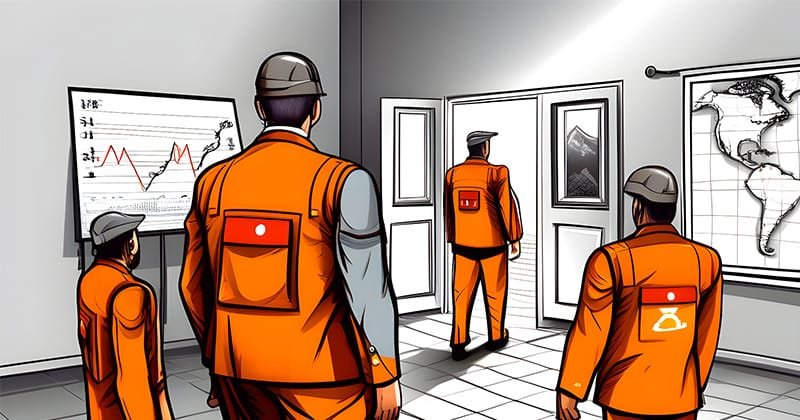Cyber threats aren’t just “out there” anymore—they’re part of everyday life. From fake emails trying to trick you into clicking a link, to criminals locking up a company’s files for ransom, the dangers are real and constant.

Approx reading time: 3 minutes

When things go south and it feels like the world’s coming to an end, cool-headed leadership and rock-solid teamwork become critical. It’s popularly called a SHTF scenario and it stands for “shit hits the fan”. This isn’t your everyday office drama; this is about immediate action, gutsy leadership, and the knack to coordinate a team under intense pressure and put the skills and temwork to an ultimate test.
Steering the ship during such tumultuous isn’t just about bossing around. It’s about knitting a team together, giving them a sense of purpose, and building a resilient crew. Let’s not forget, clear and effective communication forms the backbone of handling crises.
By communication, I don’t mean just barking orders and passing on data. It’s about lending an ear to the crew, taking their inputs, and integrating their ideas into the grand plan. Good communication builds trust, clears up any confusion, and helps align everyone towards the same goal.
Now, here’s the thing about SHTF leadership – it’s all about making decisions under pressure. And these aren’t your run-of-the-mill decisions. You’re making these calls with limited intel, on the fly, and they could have far-reaching impacts.
A good leader assesses the situation, weighs the options, and makes a call. But they’re also ready to pivot, to adapt as new information trickles in or the situation evolves.
In these high-stakes games, teamwork is all about everyone knowing their part. A leader should be adept at handing out tasks, leveraging each person’s strengths, and ensuring work is shared evenly.
This approach cranks up the team’s productivity and also boosts morale by acknowledging everyone’s input. And speaking of morale, that’s another ball in the leader’s court.
When we’re talking end-of-days scenarios, fear and stress can be a real downer. Leaders need to keep the spirits up, keep that spark of hope alive. This could mean celebrating the small wins, providing comfort, and keeping an optimistic attitude even when things look bleak.
Preparation and knowledge are also crucial in handling disaster situations. A team that’s well-trained and well-versed in different survival scenarios is more likely to keep their heads cool.
Leaders should push for regular training and practice to keep everyone sharp and confident. When the going gets tough, the ability to think on your feet, to adapt, and to get creative can make or break the team. Of course, leaders will also make sure about their group’s preparedness level, including also the assets to take along, such as their bug out bag, shelters, first-aid kits and everything else according to the plan.
Last but not least, let’s not forget about ethical leadership. In tense situations, it can be tempting to cut corners or make questionable choices. A true leader upholds ethical standards and ensures that the team’s actions are not just efficient, but also morally upright.
This approach builds trust and respect, both within the team and with any outsiders they might come across. Leadership and teamwork in these crisis situations are about more than just surviving; it’s about thriving under pressure.

Pulling this off requires a cocktail of clear communication, quick decision-making, smart task delegation, morale-boosting, readiness, adaptability, and ethical behavior. Leaders that can instill these qualities in themselves and their teams are more likely to get through tough spots, ensuring not just survival, but also the well-being and integrity of their group.